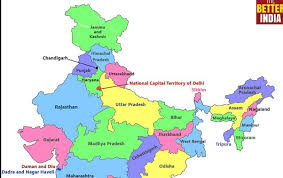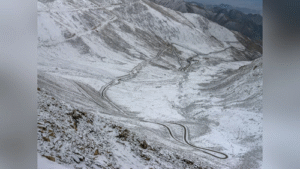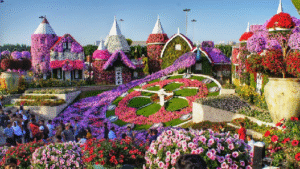Uttar Pradesh, strategically located in northern India, shares borders with several states, making it a central hub for political, cultural, and economic activity.
- Rajasthan: To the west.
- Haryana: To the northwest.
- Delhi: To the northwest.
- Uttarakhand: To the north.
- Bihar: To the east.
- Madhya Pradesh: To the south.
- Chhattisgarh: To the southeast.
- Jharkhand: To the southeast.
- Note: Uttar Pradesh does not share a border with Himachal Pradesh, as Himachal Pradesh is located to the north of Haryana, and it does not directly border Uttar Pradesh.
- Uttar Pradesh is situated in the northern part of India, acting as a geographical hub connecting several key regions of the country.
- The state’s location plays a significant role in facilitating movement and trade between northern, central, and eastern India.
- The state borders regions of Rajasthan, Delhi, and Uttarakhand, offering easy access to important economic centers and states in India.
- It serves as a gateway for trade and travel between northern and central India, particularly with neighboring Bihar, Madhya Pradesh, and Jharkhand.
- Uttar Pradesh is India’s most populous state, with a significant influence on the country’s political, economic, and cultural landscape.
- The state plays a central role in India’s politics, with its large population contributing to a significant number of seats in the Parliament, making it a critical player in national elections.
- Historical Sites: Uttar Pradesh is home to iconic historical sites like the Taj Mahal in Agra, Varanasi, one of the oldest living cities in the world, and the holy city of Ayodhya.
- Religious Importance: Varanasi is a major center for Hindu religion, attracting millions of pilgrims each year.
- Festivals: The state is renowned for hosting major festivals, including the Kumbh Mela, one of the largest religious gatherings in the world.
- Uttar Pradesh has a diverse economy, contributing to industries like agriculture, manufacturing, and textiles.
- The state plays a crucial role in India’s agricultural output, particularly in the production of wheat, sugarcane, and rice.
- Cities like Lucknow and Kanpur are key centers for manufacturing and commerce.
- The state’s historical monuments, spiritual centers, and vibrant cultural heritage make it one of India’s top tourist destinations. The Taj Mahal, Kashi Vishwanath Temple, and Bodh Gaya (nearby) attract visitors from across the globe.
Uttar Pradesh’s geographical location and its borders with numerous states make it a vital part of India’s political, cultural, and economic framework. Its strategic positioning not only facilitates inter-state trade and connectivity but also allows it to be a melting pot of historical significance, cultural richness, and religious importance. The state’s major cities, festivals, and landmarks continue to influence India’s identity, shaping the nation’s past, present, and future.







